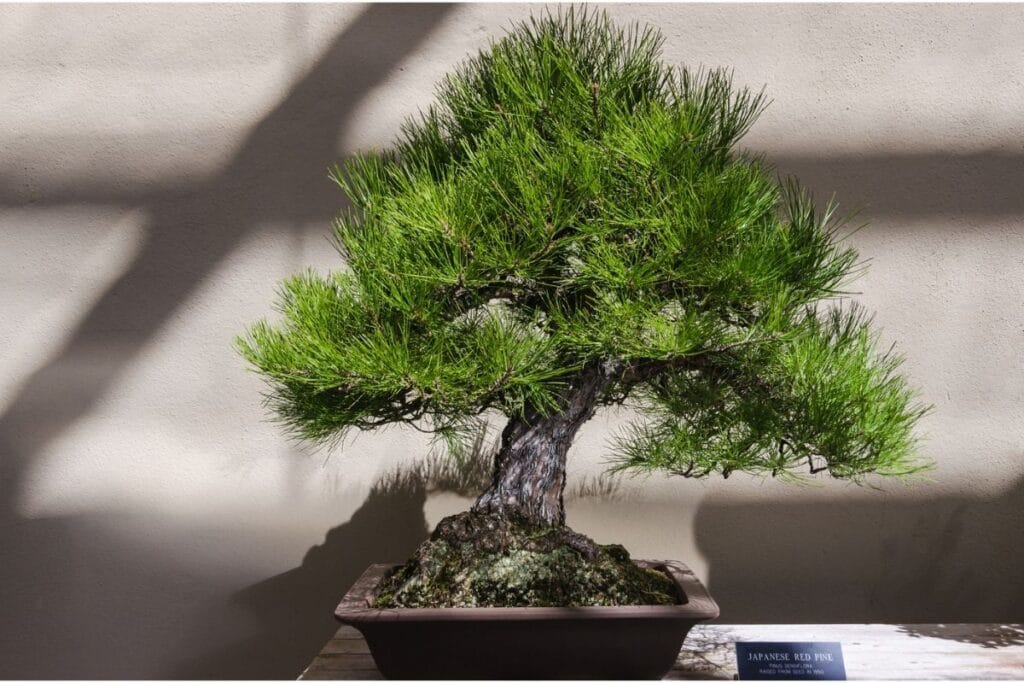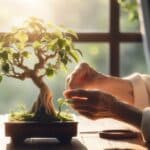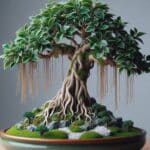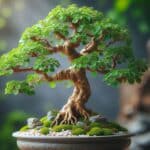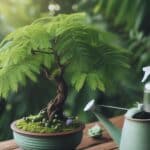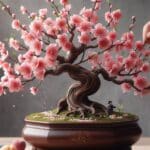When it comes to growing bonsai trees, very few species are quite as prized (or more popular than) as bonsai pine trees. There are hundreds of pine, or Pinus, species you can choose from for bonsai and all offer unique characteristics and undying beauty.
You can grow pines in many different shapes and styles for bonsai, allowing you to experiment with any preferred style of growing. While some pine tree species offer two flushes of growth per year (generally, those that are from coastal areas of Japan), others offer only one flush of growth (these tend to be more adapted to harsh, sometimes mountainous, conditions).
Whichever kind of bonsai pine plant you choose, you’ll find detailed instructions on how to care for your plant below.
Interesting Facts about Pine Bonsai Tree
| Height | 60-80 inches |
| Width | 12-30 inches |
| Sunlight | Full sunlight |
| Flowering Time Length | Does not flower |
| Lifespan | 100+ years |
| Scientific Name | Pinus |
Types of Bonsai Pine Tree
There are several types of pine trees that you can grow for bonsai. In fact, the Pinus genus is home to more than 100 different species! Not all of these species are equally well-suited for bonsai growing, though.
Pine bonsai trees can be categorized as one-flush or two-flush trees. The care requirements will differ slightly between the two, but in general, you can follow the same steps regardless of the species you select.
Here are some of the best types of pine trees for bonsai use:
Pinus thunbergii (Japanese black pine)
A strong tree with long, dark green needles in groups of two, the Japanese black pine is a species of pine bonsai that produces two flushes of new growth each year.
This plant is closely related to other popular pines bonsai species, such as the Japanese red pine.
Pinus mugo (Mountain pine)
The mountain pine is native to Europe, where it is generally found growing in the mountains. This tree is often found growing on bare bedrock, making its roots well-suited for bonsai growing. It has squat green needles that appear in pairs along with dark brown bark and dense, resinous, and fibrous wood.
Pinus sylvestris (Scots pine)
The Scots pine grows all over Europe and in Siberia but has also acclimated to growing in parts of the United States. This pine bonsai species is naturally tall with thin paired needles. It has a red bark that becomes redder as it moves up the trunk of the tree.
Pinus parviflora (Japanese white pine)
Also referred to as the five-needle pine, this mountain pine has super soft needles in clusters of five apiece. A more feminine-looking bonsai plant, it is also highly adaptable. You can sometimes find plants for sale that have been grafted on the root systems of black pines, offering more stable growing conditions.
Pinus aristata (Rocky Mountain bristlecone pine)
Also known as the Colorado bristlecone pine is a long-living species of bristlecone pine that is native to the USA.
Growing Bonsai Pine Tree from Seed or by Propagation
You can typically propagate pine trees by seed or by grafting, though there are some species that can be air-layered as well.
How to Care for Bonsai Pine Tree
Sunlight
Bonsai pine trees require full sun for several hours (at least six) each day. The more light your tree receives, the healthier it will be. Plants that do not receive enough light generally are shorter and more compact. If you notice that the needles on your tree have become leggy or elongated-looking, it might be time to give your plant more sunlight.
Watering
Well-draining soil is absolutely essential for most bonsai pine trees. Use a soil mix that is designed for bonsai plants. Keep your tree consistently moist but try not to let it get waterlogged. Just water whenever the top two inches of soil is dry.
In most cases, it will be challenging to grow your pine bonsai indoors because it will not be exposed to enough humidity. Most people, therefore, grow their pine bonsai trees outside.
These trees are hardy and frost-tolerant, especially if you place them in a sheltered location where they will be protected from the worst of the winter weather. You may also find that you have to spritz your pine bonsai with water occasionally during the drier winter months.
Fertilizing
Keep the soil pH for your pines bonsai at around 5.5 to 6.5. Fertilize regularly, ideally once per year during the early spring to late fall. Avoid nitrogen-rich fertilizers and instead, use a more balanced organic fertilizer instead.
Potting and Repotting
You will only need to repot your bonsai pine tree about once every two to five years. This will allow you to freshen up the soil and prevent the tree from becoming root-bound. Repot in the spring right after the buds swell.
Pruning Bonsai Pine Tree
Bonsai pine trees are sometimes considered to be more advanced kinds of bonsai trees – and not ideal for beginners. However, that’s somewhat of a misconception. These bonsais can be tricky to care for, but as long as you have a good handle on the pruning and wiring practices you need to follow with this tree, you shouldn’t have too many problems.
Wiring will help encourage energy distribution around the tree. You don’t want to do too much wiring at once, as this can cause long-lasting damage to your tree. Instead, you’ll just wire once per year, generally at some point between the early fall to the early spring.
Similarly, pruning should be done regularly, too, even when your pine bonsai is relatively young. These trees start by growing vigorously at the top first, with poorly-pruned bonsais becoming top-heavy and unstable.
Prune in the spring or summer, shortening elongated candles and removing old needles. If you need to do any heavy pruning to the main branches, wait until the fall to do so.
Pests and Diseases
Bonsai pine trees, like most bonsai plants, are prone to several different pests and diseases. Watch out for pests like spider mites, aphids, caterpillars, and scale. Common diseases include root rot and a variety of other fungal diseases. Fortunately, you can usually control these by following good watering habits and limiting overwatering.
Where to Buy Bonsai Pine Tree
Pine trees are some of the most common species you will find at any nursery. However, you shouldn’t settle for just any pine tree. Make sure the one you select can be trained to grow in a small container and to be pruned and wired for bonsai growing.
Otherwise, you may find that your plant suffers from problems later on. Consider shopping at a specialty bonsai store for the best results.
FAQs
How do you keep a pine bonsai alive?
To keep a pine bonsai alive, provide it with ample sunlight, use well-draining soil, and water it appropriately. Pines generally prefer a slightly acidic soil, and they benefit from periodic fertilization during the growing season. Pruning and wiring are also important for shaping and maintaining the desired form.
Are pine bonsai indoor or outdoor?
Pines are typically outdoor bonsai. They require a period of winter dormancy and are better suited to the natural fluctuations in temperature and light that occur outdoors. While some pine species can tolerate indoor conditions temporarily, long-term indoor cultivation can be challenging.
How long can bonsai go without water?
The water needs of a bonsai depend on factors such as species, size, and environmental conditions. In general, bonsai should not be allowed to dry out completely.
Up next: Growing and Caring for a Plum Bonsai Tree (Sageretia theezans)
*image by sergio.h.gonzalez/depositphotos

